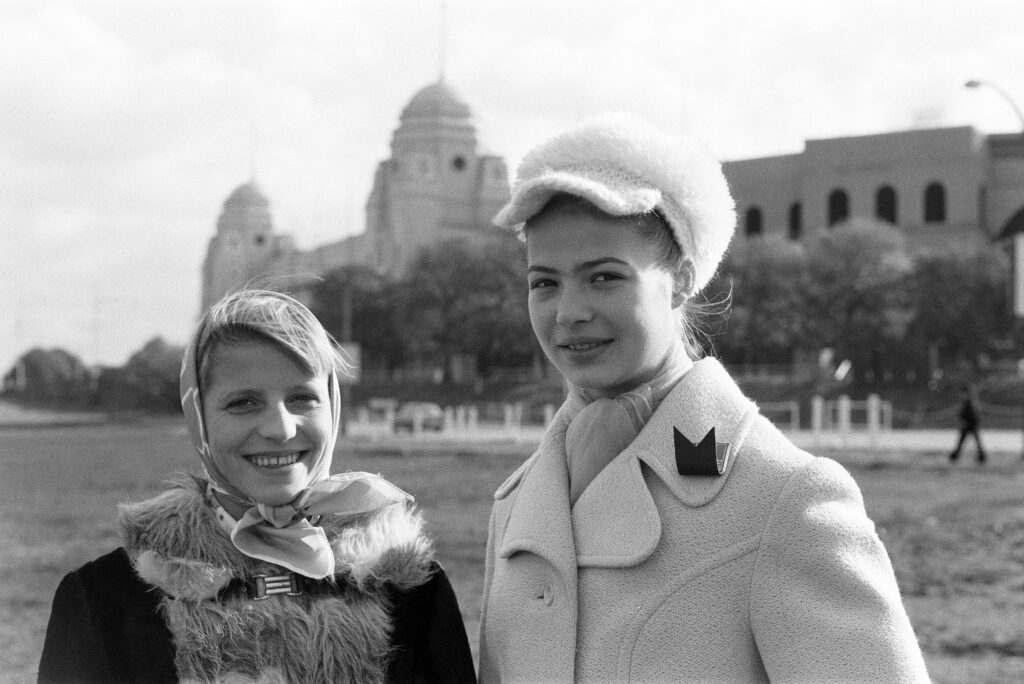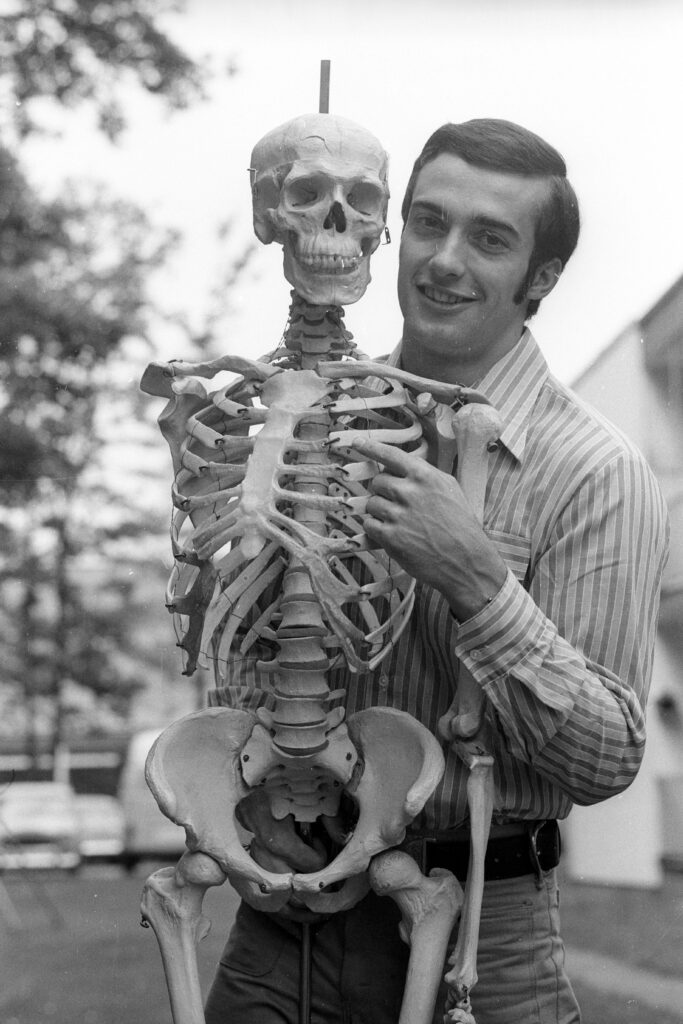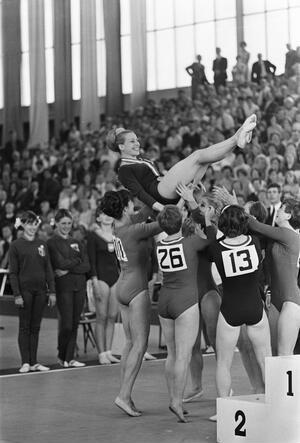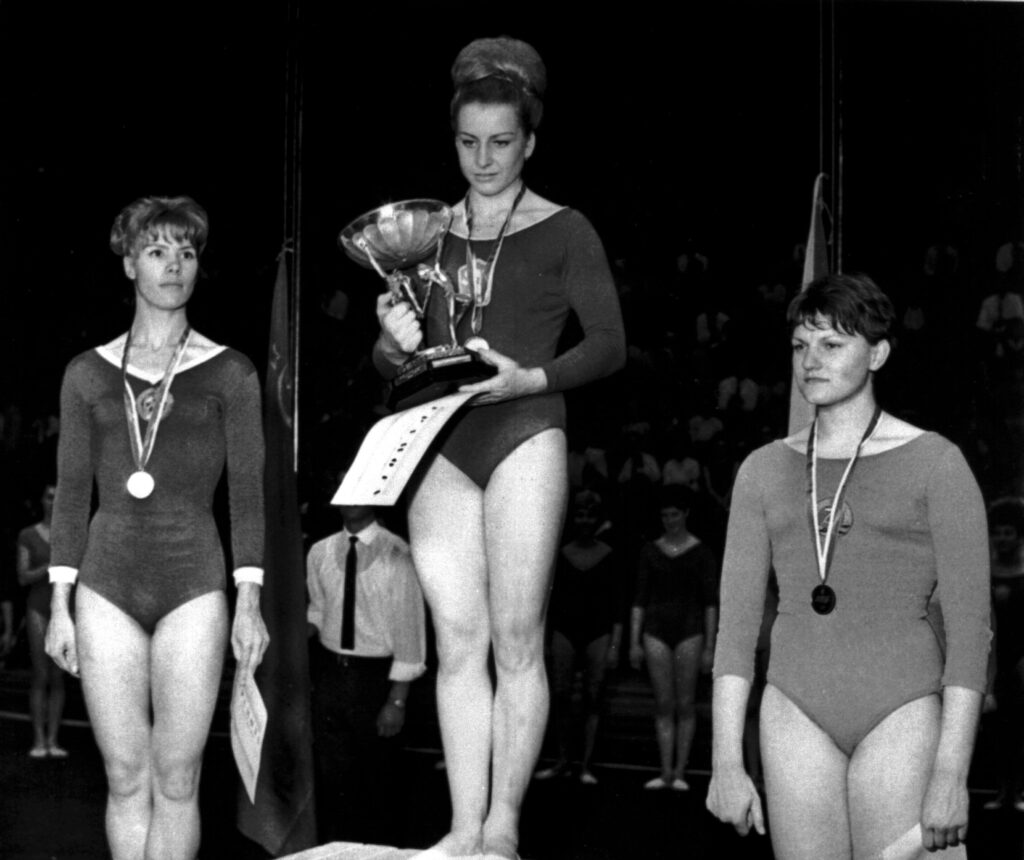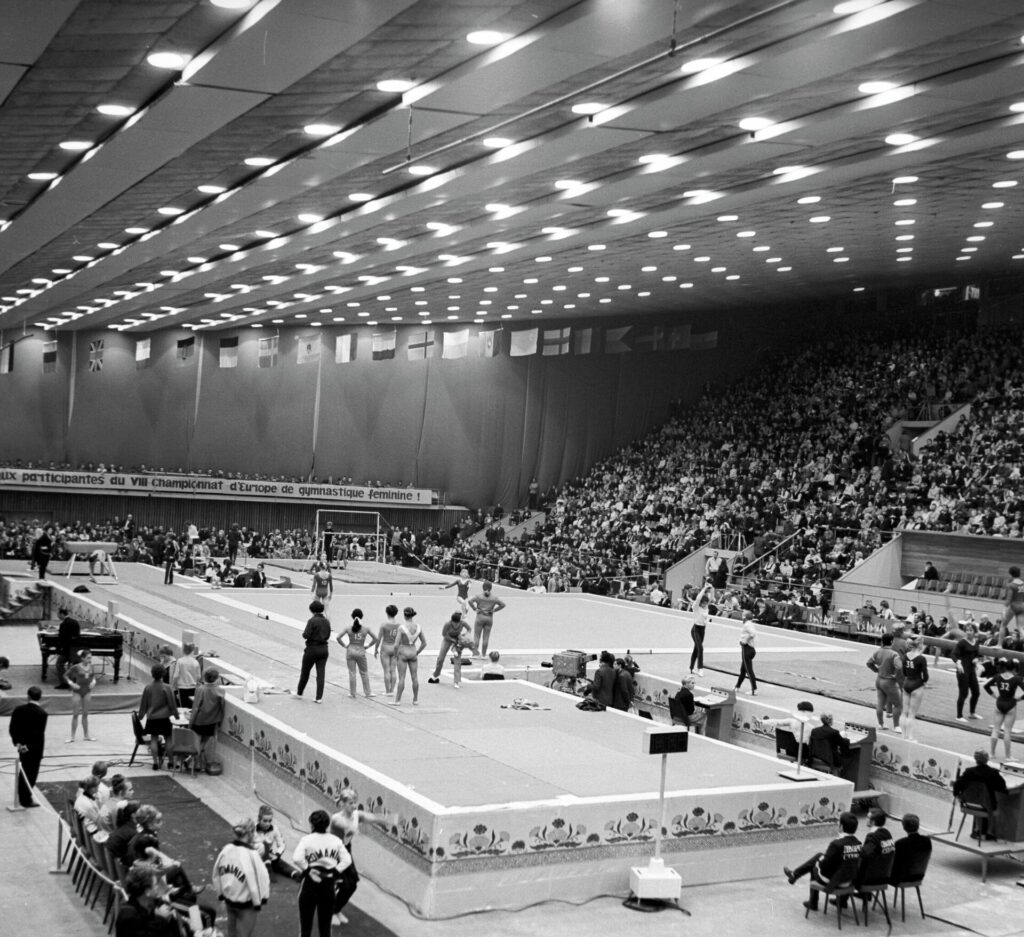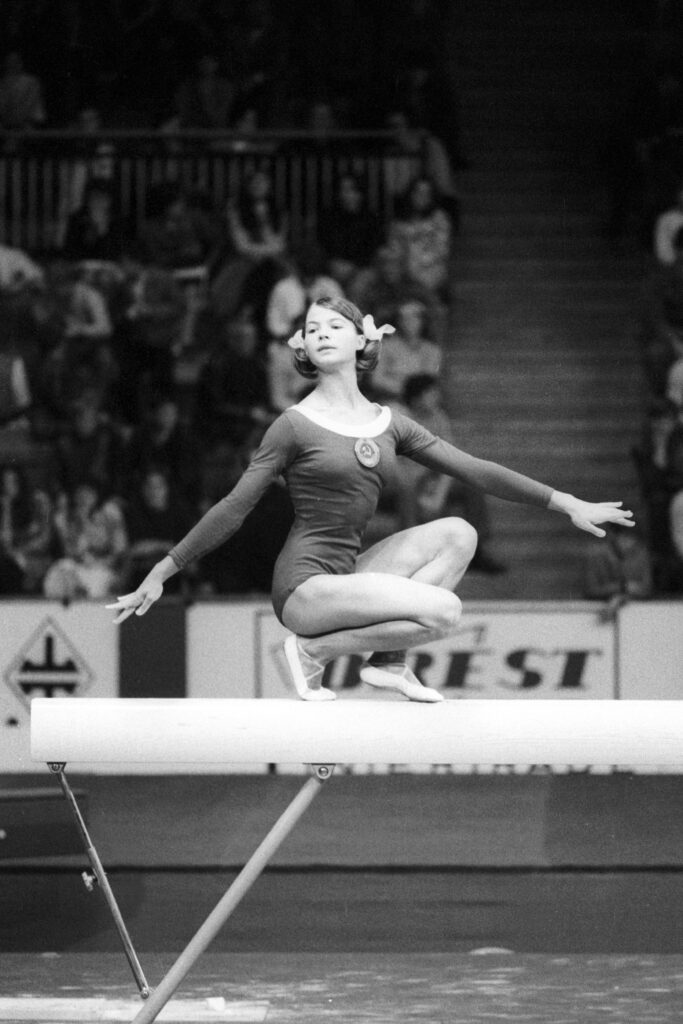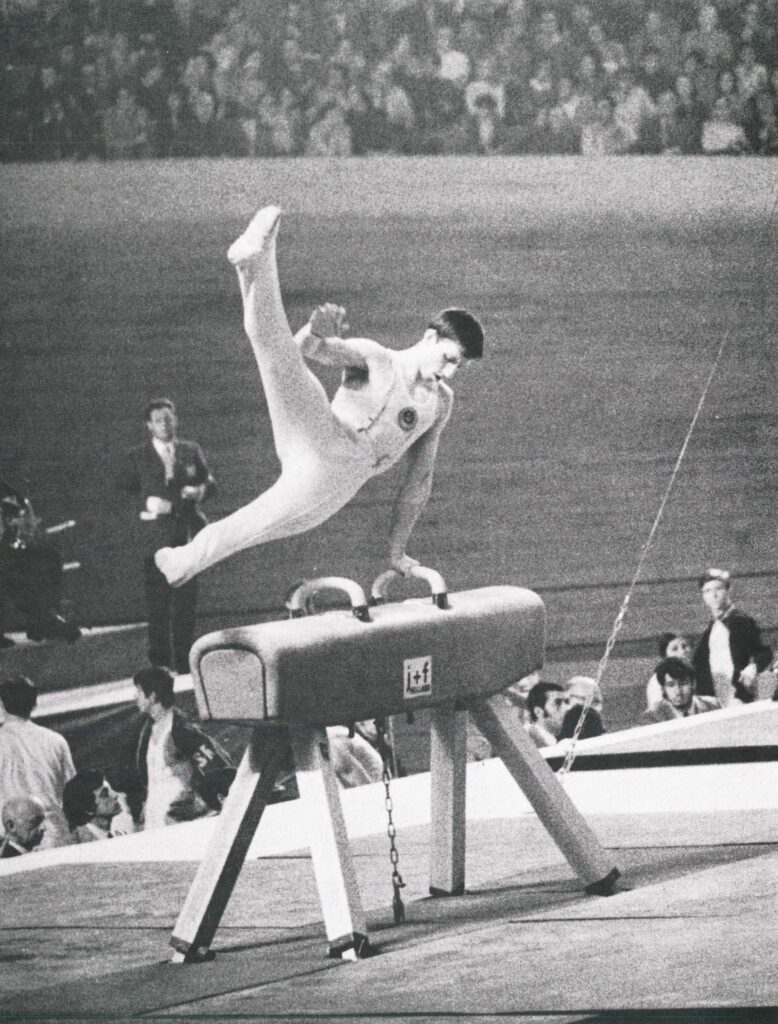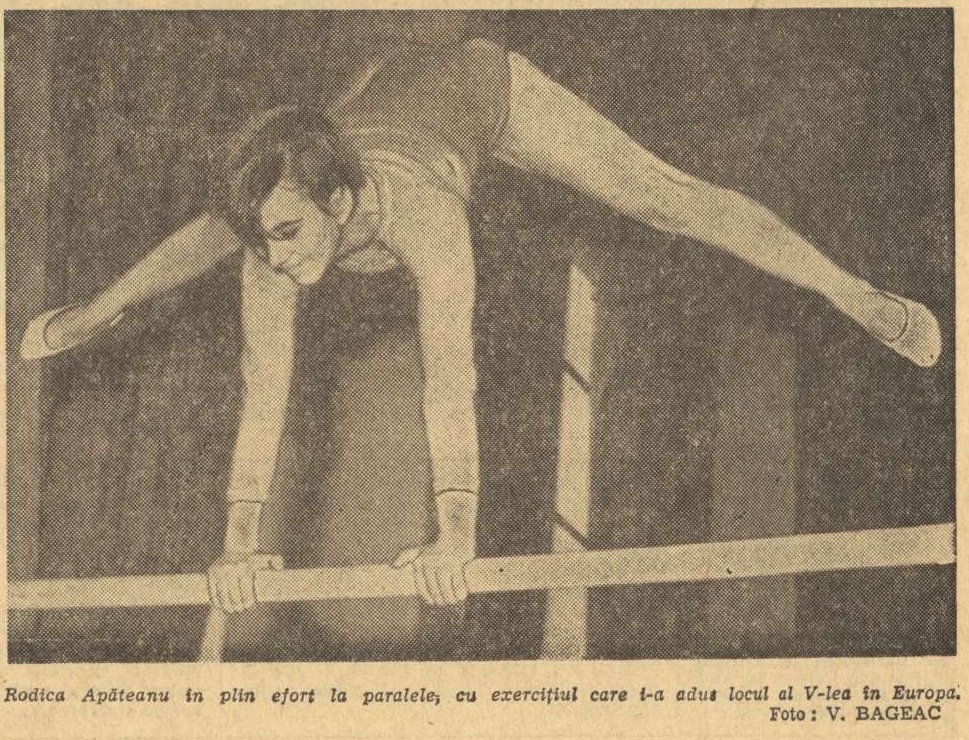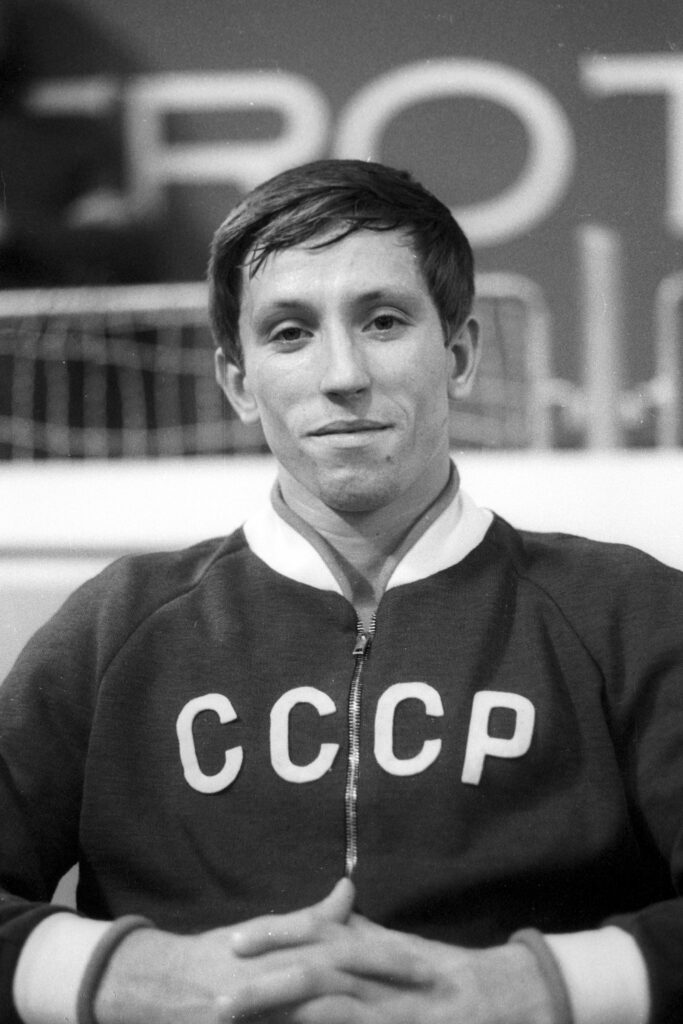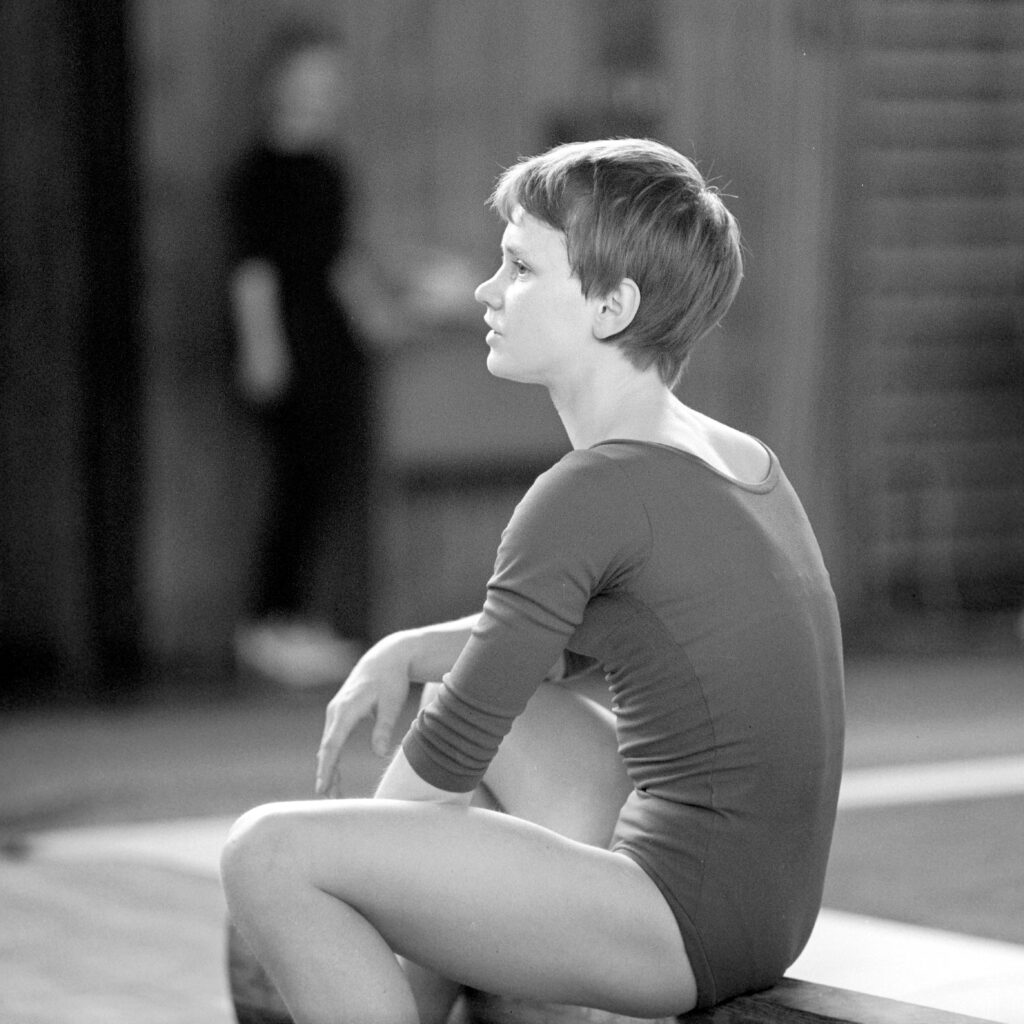Only four gymnasts have swept the medals at the European Championships: Latynina in 1957, Čáslavská in 1965 and 1967, Tourischeva in 1973, and Boginskaya in 1990. All legends in their own right. And, as we’ll see below, Tourischeva won the floor title even with a fall during finals.
Looking back on this competition, vault was one of the more interesting events because much innovation was happening. Korbut introduced a full twist onto the horse. (Unfortunately, she was too injured to compete in finals and scratched after trying to sprint down the runway.)
Additionally, Tsukaharas, the vault that Tsukahara Mitsuo popularized in 1970, were becoming popular in women’s gymnastics. While others had competed the skill previously, Tourischeva, the reigning World and Olympic all-around champion, was now doing it, helping the vault seem less “masculine,” as one newspaper described it during the 1973 University Games.
Fun Trivia Fact: While the media coverage focused on Tourischeva and Korbut, neither gymnast received the highest score during the competition. Angelika Hellmann of East Germany did — with a 9.7 during the uneven bars finals.
So, with no further ado, here’s what happened at the 1973 European Championships in London.
